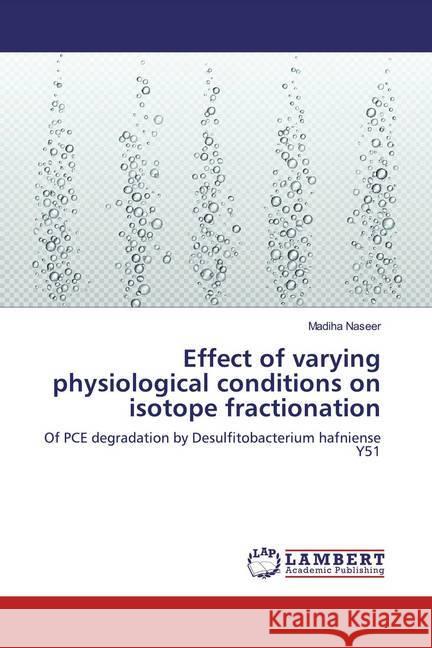Effect of varying physiological conditions on isotope fractionation : Of PCE degradation by Desulfitobacterium hafniense Y51 » książka
Effect of varying physiological conditions on isotope fractionation : Of PCE degradation by Desulfitobacterium hafniense Y51
ISBN-13: 9783659769481 / Angielski
Effect of varying physiological conditions on isotope fractionation : Of PCE degradation by Desulfitobacterium hafniense Y51
ISBN-13: 9783659769481 / Angielski
(netto: 172,37 VAT: 5%)
Najniższa cena z 30 dni: 179,73 zł
ok. 10-14 dni roboczych.
Darmowa dostawa!
Most of the ground water systems in U.S. and Europe are contaminated with industrial solvents like chloroethenes such as tetrachloroethenes (PCE) and trichloroethenes (TCE). The major challenge of the century is the cleanup of contaminated sites and provision of clean water resources to the future generations. Detection and isolation of microbial communities at contaminated sites provides an evidence of in situ degradation through organohalide respiration (OHR). Some microbial species like Desulfitobacterium hafniense Y51 can reductively dechlorinate PCE to dichloroethene (cis DCE), TCE as an intermediate. D. hafniense strain Y51 are referred as generalist because they can grow on a broad range of growth substrates such as chlorinated compounds, pyruvate, nitrate, iron, sulfate etc. as electron acceptors, and fumarate, lactate, formate as electron donors. These strains express the highly specific reductive dehalogenases (PceA) when exposed to particular chlorinated substrates. In the following thesis PCE reductive dechlorination was studied under varying physiological adaptation states (adaptation to PCE respiration) of strain D. hafniense Y51.











